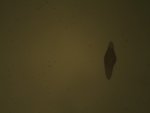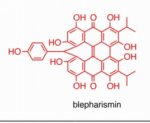Arayan
0
- Joined
- Oct 26, 2009
- Messages
- 1,746
- Points
- 48
Today I have noticed a strange and nice phenomenon on a ciliated protozoa. This single-celled organism is called "Blepharisma japonicum" and posses a reddish pigment which was used for chemical defence and for photoreception.
The strange thing is the following: if I put a cell under a blu ray laser (<5 mW 405 nm) for few seconds the cell becomes fluorescent! I tried with other ciliate species but this phenomenon is visible only with Blepharismas. Very very nice

The strange thing is the following: if I put a cell under a blu ray laser (<5 mW 405 nm) for few seconds the cell becomes fluorescent! I tried with other ciliate species but this phenomenon is visible only with Blepharismas. Very very nice
Attachments
Last edited:








